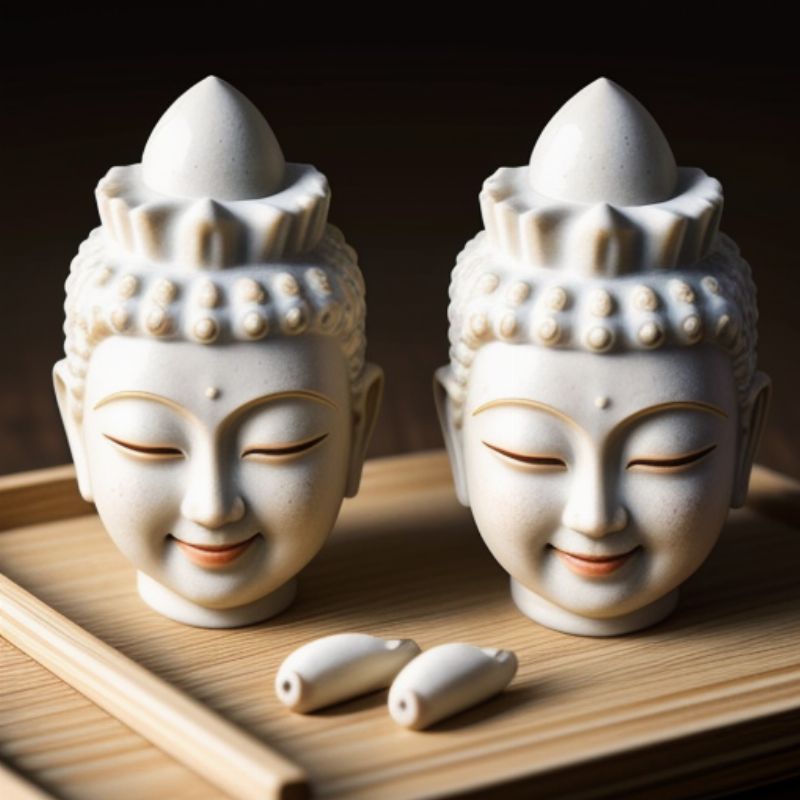When scouring the web for information about Buddha, one question consistently emerges: why is Buddha depicted as fat? While seemingly trivial, this query holds significant importance for Buddhist practitioners. This article aims to address the most common inquiries regarding the appearance of Buddha. Specifically, Familybuddha will explore “Why is Buddha so fat?”, and as a bonus, will tackle the question of who the “real Buddha” is.
Why do Buddhist temples feature various representations?

There isn’t a single explanation, but rather several. It’s important to understand that the statues found in Buddhist temples and places of worship don’t depict a “god” but rather serve as role models.
Hence, the model may differ based on geographical location and the intended message. For the uninitiated, each statue within a temple communicates a message or imparts a lesson.
For instance, variations in the depiction of the model can be observed in Thailand, Japan, or China. Occasionally, cultures utilize different representations of Buddha depending on the context, whether portraying him as plump or slender.
Note: It’s significant to recognize that distinctions among Buddha depictions extend beyond just weight. Sometimes, it’s the positions of his feet, arms, or fingers that determine the statue’s meaning.
What are the most prevalent images of Buddha, and what do they signify?

Numerous representations of the awakened Buddha exist worldwide. However, two of them are widely popularized and frequently encountered: Siddhartha Gautama (the historical slim Buddha) and Chan Butai (the fat Buddha).
The slender Buddha, known as Siddhartha Gautama or the historical Buddha, is often regarded as the founder of Buddhism. Dismissing his slim form while focusing solely on the question of why Buddha is fat indicates a lack of understanding of this belief system. Siddhartha Gautama remains the central figure in the Buddhist religion, particularly in Theravada Buddhism, which is prevalent in Southeast Asia.
As an indicator, he is also the pioneer of this movement, which has now gained global prominence. Thus, he is referred to as the founder, historical Buddha, or, sometimes colloquially, the “true Buddha.” In essence, he was the first to earn this title in Buddhist tradition.
In many of his poses, his physique reflects that of his actual life, and his attire harkens back to his noble lineage. Furthermore, since his primary teaching emphasized moderation, a slender figure aligns with this principle.
Why is Buddha so fat?

The chubby Buddha, known as Chan Butai or the Laughing Buddha, differs from Siddhartha Gautama by his potbelly and jovial smile. Typically, it symbolizes wisdom, zest for life, and prosperity. In certain regions, legend has it that rubbing his belly brings happiness.
His corpulence primarily signifies abundance, complemented by his cheerful demeanor. However, the specific portrayal of his size is noteworthy. Upon closer observation, one may notice that his belly protrudes slightly more than the rest of his body. Why? Some interpretations regard the stomach as the seat of the soul, thus a larger belly on the Buddha symbolizes profound wisdom and boundless compassion.
For context, Chan Butai is merely a Chinese monk born in the 10th century, many centuries after Siddhartha Gautama. Notably amiable and a fervent advocate of boundless sharing and joy, he was renowned for his wisdom.
The Other Buddhas
But wait, there’s more! Some Buddha statues, though less common and popular, deviate from the aforementioned two. These may depict an effeminate ascetic or a younger figure. Typically, these variations hold more decorative significance and carry specific meanings.
Among all these representations, who is the “true Buddha”?
Given the array of versions discussed above, it’s natural to question the abundance of statues and discern the authentic one. To clarify, Buddha, in its literal sense, signifies “the awakened.” This title is attained upon achieving nirvana or enlightenment.
With this definition in mind, it becomes apparent that multiple individuals can rightfully bear the title of Buddha without usurping it. However, when referring to the “true” Buddha, it’s typically to the first individual to achieve this status: Siddhartha Gautama.
Conclusion
That concludes this article discussing the various depictions of Buddha and their significance. As a takeaway, it’s important to understand that each statue of Buddha serves a distinct purpose. I hope that this article helps you to answer the question “Why is Buddha so fat?”. If you’re interested in Buddhism, you can acquire and utilize these statues as decorative pieces. Placed in your home, they serve as reminders of the path towards Nirvana.










